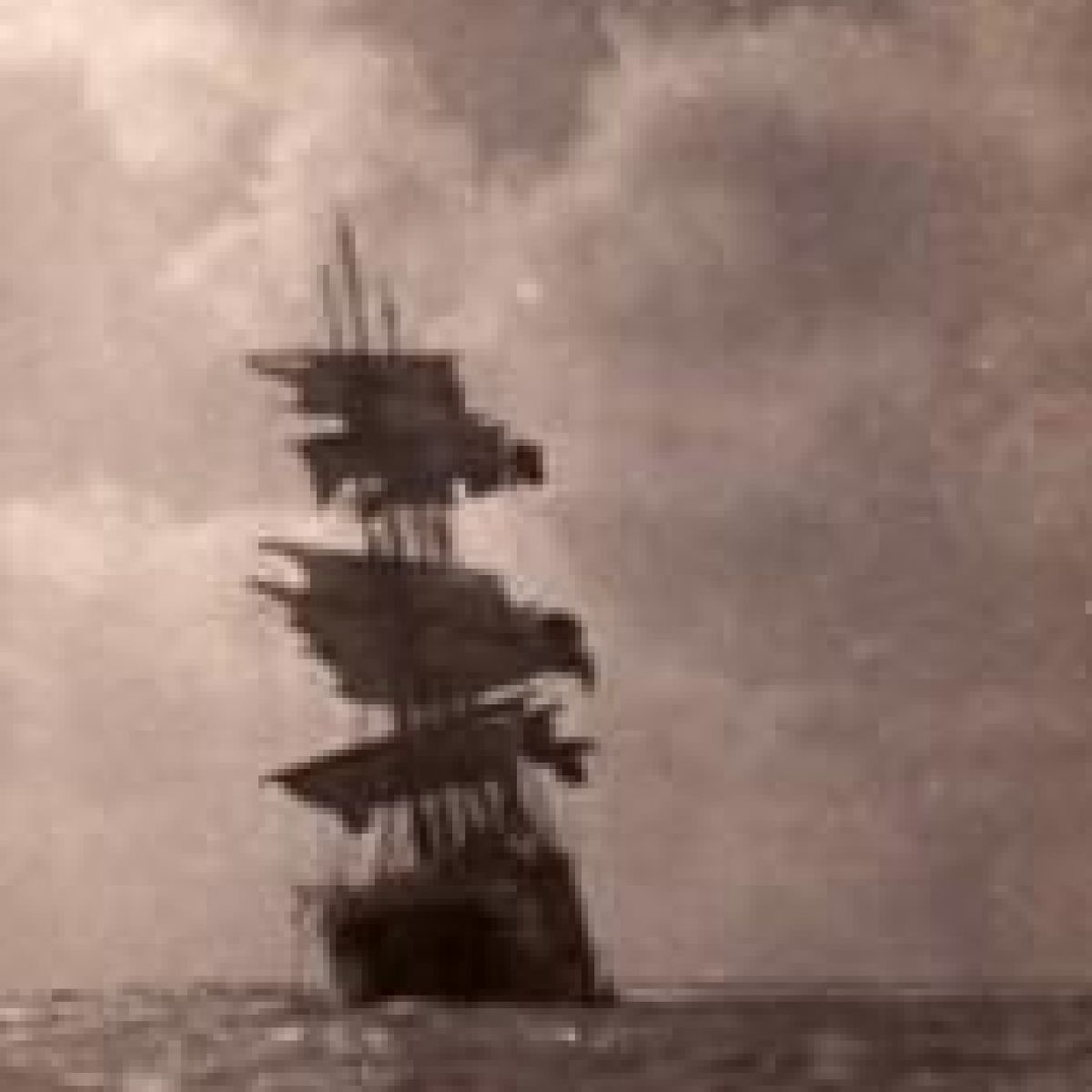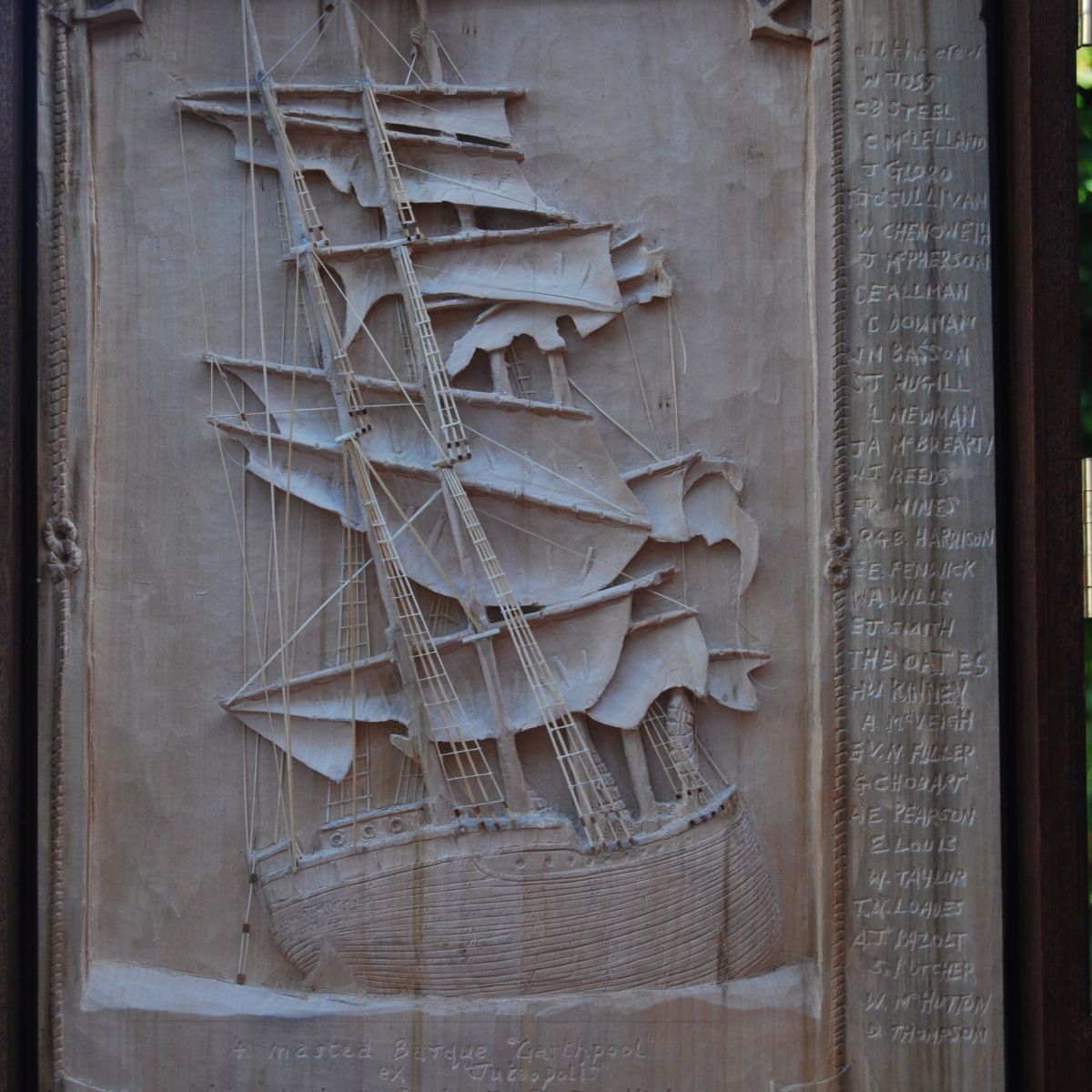11th October 2019
The “Garthpool” the last British Windjammer sailed from Hull in 1929.
Windjammer is a colloquialism for the last type of the square-rigged sailing ship. The name originated in the USA in 1899, and though British seamen apparently disliked it, they accepted it and the word came into common usage. When a square-rigged vessel was sailing as close to the wind as possible, her lower yards were braced sharp up to such an angle to be almost touching the forward shrouds and rigging on the lee side of the ship. She was then said to be jammed hard-up into the wind. Hence windjammer! This opening paragraph and words below are taken from the Introduction to the book “Windjammers of the Horn” by A G Course first published in 1969 by Adlard Coles Limited.
The book describes in great detail stories and voyages and losses of ships, barques and the men of Sir William Garthwaite’s Marine Navigation Company. This short narrative is about the final voyage of the last windjammer to fly the British Flag, the four-masted, stump topgallant barque of 2,652 tons net, the “Garthpool”, who left Alexandra Dock, Hull, in tow of the tug “Seaman” on the 23 October 1929, bound for Cape Borda, Kangaroo Island, South Australia, in ballast (no cargo on board), for orders. When Beachy Head was reached, sail was set and the ship was powered by the wind only, the tug returning to Hull with love letters from the crew.
The vessel made good progress on her voyage and musical instruments were played by the crew who sang sea shanties during some free time, which wasn’t often. On 8 November the ship sailed between Palma and Teneriffe in the Canary Islands with the wind increasing driving her along at 13 knots.

On the morning of 11 November, Armistice Day, at eleven o’clock GMT, 9.30 am ship’s time, the Red Ensign was dipped to half mast, and with all hands mustered aft on the poop, the two minutes silence was observed in latitude 17 degrees 40 minutes north, longitude 22 degrees 25 minutes west. It became hazy later that day and at 4.30 pm Sal Island, one of the Cape Verde Islands, was abeam.
At 9.25pm that night a sudden shout of “All hands on deck!” brought the starboard watch tumbling out from below. The port watch were hauling the yards round, and, fine on the bow to leeward, high land could be seen through the hazy mist. Almost immediately the look-out on the fo’c’sle head shouted : “Breakers ahead!” an attempt was made to turn the ship but it didn’t work and the “Garthpool” crashed on to the reef with a lurch to port, with a sickening shaking of everything on board. The main brace was made fast quickly and the crew rushed for the shelter of the donkey house for it seemed that the masts and yards must crash down about their heads on to the deck.
It was impossible to back the ship off as a big sea was running with strong trade winds and a heavy ground swell held her fast. Water was flowing into the ‘tween decks. There was no hope for the barque and Captain Thompson gave the order “All hands abandon ship!” The starboard lifeboat was difficult to launch as the ship was listing over heavily to port and the lifeboat had to be helped down the sloping side into the water. Miraculously, no lives were lost and the story continues but the outcome was the “Garthpool” was the last British windjammer to sail the seven seas.
One of the crew, Arthur Edward Pearson, who was a River Humber pilot apprentice gaining valuable experience under sail, took a photograph of the barque after the grounding and this was used as a ‘template’ by one of his six grandchildren to carve a woodcarving relief of the memory. This took Ian Pearson two years to complete under the expert tutelage of OH Boyd, the Regional Organiser of the N. Lincs & E. Yorks Woodcarvers Association.
Arthur Pearson became a Humber Pilot and after the Second World War undertook salvage operations in Europe to free ports of obstructions to enable shipping trade to take place again. He was awarded an OBE for this work. He wrote a diary of his “Garthpool” adventures which has been donated to the Hull Maritime Museum Archives.
Story and information kindly provided by Ian Pearson.


